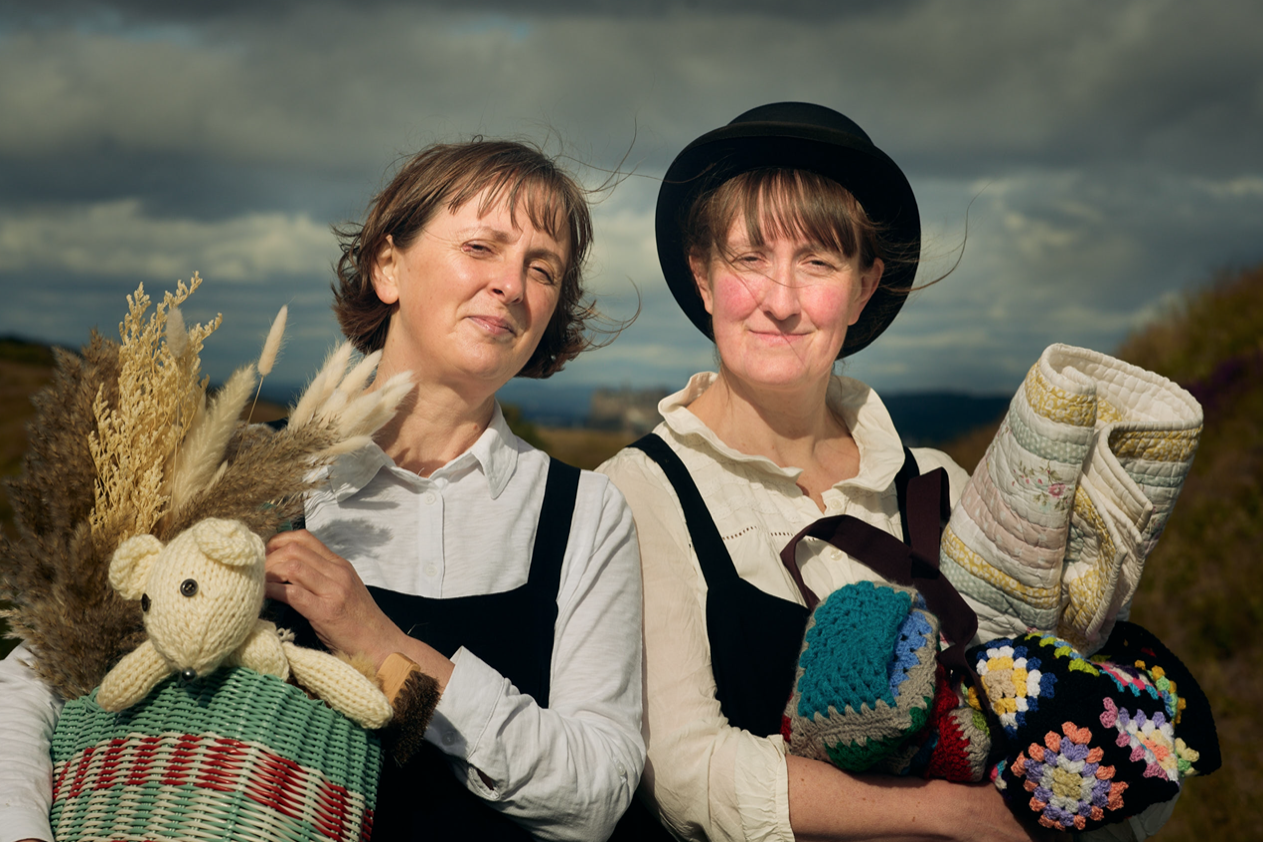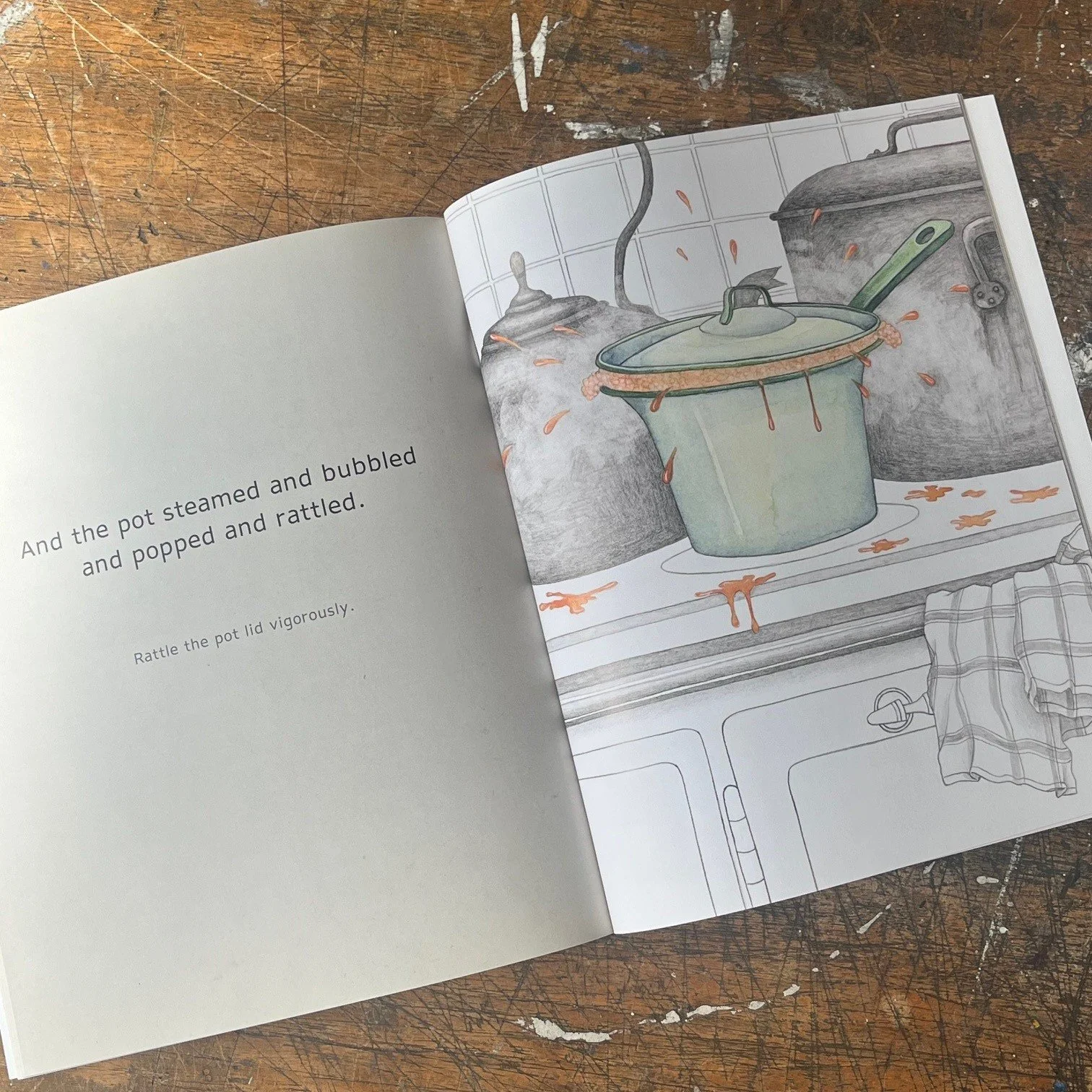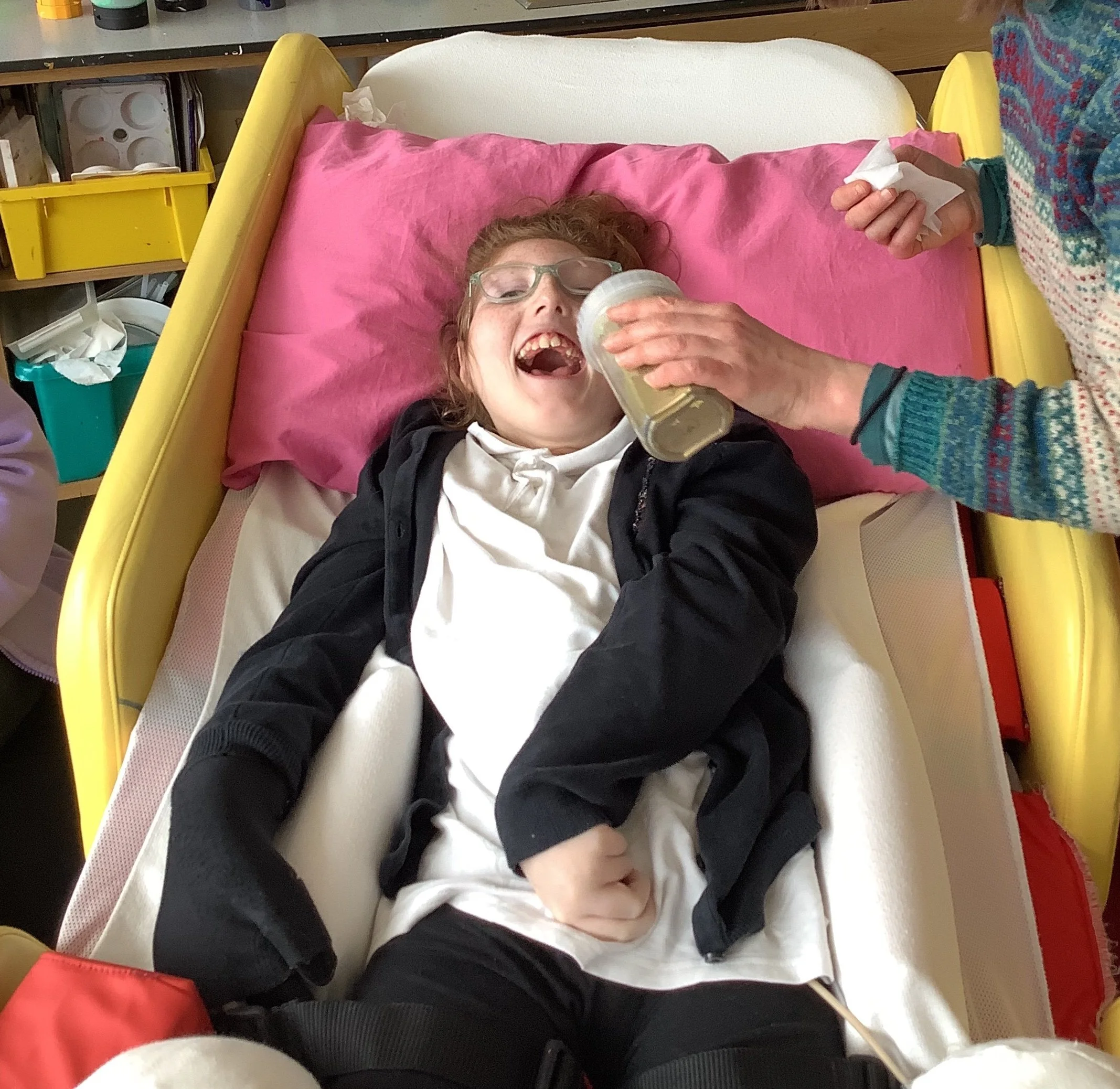Since 2020 I have since been developing my experience in working with children with PMLD (Profound and Multiple Learning Difficulties). The term PMLD is very broad and in reality, each child is very unique in what stimulates and engages them. Many children respond positively to different sensory experiences and my challenge is to work out what I can offer in terms of meaningful sensory art activities. I love the intimacy of this work and how my own perception of the world around me is greatly altered and enhanced through my engagement with these children. My definition of 'success' has also been challenged many times as I'm shown time and again that process is far more important than outcome. Witnessing emotional responses from parents/guardians, carers and teachers, as their young person subtly responds, demonstrating that they're engaging with a story or art activity, is very humbling.
Photograph by Peter Dibdin
Workshops
Ailie Finlay and I regularly work together delivering accessible sensory storytelling and art workshops at many different venues, including festivals, schools, respite centres and hospitals. Our events usually begin with Ailie telling a short story, poems and songs, along with her basket of sensory props. We then pick up a loose theme and run with it in the art workshops where I aim to include as many sensory art techniques as possible. Ailie is an amazing sensory storyteller with many years experience in working with children and young people with PMLD and has been a huge inspiration and support to me. She is the founder of My Kind of Book, a charity that supports and promotes accessibility to books for children with PMLD.
Illustration Work
Children with PMLD are not often visually represented and so Ailie commissioned some illustration work for her website and to go alongside some pieces she did as part of the Wigtown Book Festival in 2020-21. In 2022 we also worked together on a book resource called 'Stone Soup'. This tells a traditional story but is also brought to life through instructions on how to make the story more sensory by using different forms of touch or simple household objects. The illustrations are also simplified, closely following the narrative by representing exactly what is in the text, thereby making it less confusing for children with PMLD.
Classroom Work
In 2025 I was illustrator-in-residence at Carrongrange, an ASN (Additional Support Needs) school in Grangemouth; a project supported and sponsored by the Scottish Book Trust. I worked with a small group of students, making a weekly visit over 10 weeks, plus we were given a generous budget for buying materials. The benefits of a residency over a one-off event were immense as I had time to get to know each individual young person, some of whom were non-verbal, and learn how to gauge their responses to different stimuli. I was also able to collaborate meaningfully with the teachers and support staff so that we could exchange ideas and learn from each other.
We focussed on the theme of Kelpies (Scottish mythical water horses, which are well-known in the area) and I started off by developing a very simple narrative using lots of sensory props. Our tale began on a clear night when the stars were coming out one by one. Soon there were so many stars that there was one for each student in the class. I would repeat this a number of times and then gently chime finger cymbals while saying each student's name. This was followed up with an art activity, in this case printing stars onto a black cloth using glow-in-the-dark paint, which lights up under a UV torch beam. The repetitive nature of printing also seemed to imbue a sense of calm.
Our sessions continued to follow this simple format of repeating and building upon the sensory story each week, until eventually introducing the Kelpie. The second half of the session always included an art activity which allowed us to create and build up a repertoire of sensory props to go along with our Kelpie narrative. I tried wherever possible to include all the senses (except taste!) as often as possible. This meant really varying the mark making techniques, tools and the surfaces onto which the students were working on.
For our final session, we did a complete telling of the story, with props and all. The lights were dimmed, creating a sense of occasion and spectacle. We'd used a lot of glow-in-the-dark paint and when we used the UV torches, it lit up in quite an exciting way. But the real joy was having the space and time to be led by the students to commune with them in their delightfully sensory world of play and discovery. Seeing their engagement with the props they had made was hugely satisfying.
ARTICLES WRITTEN FOR THE SCOTTISH BOOK TRUST







